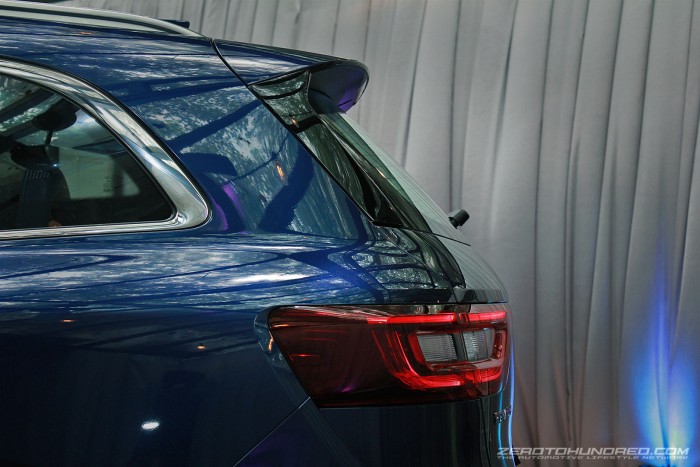Hope this piece helps, re-posted from the source link below.
How to tell if a car's been in an accident
The Bottom Line It's not that hard to identify a car that's been in an accident, so take the time, do the inspection, and protect yourself!
It's common that used car buyers today are buying cars that had been in an accident without realizing it. They could end up paying full price for something that's going to have problems inherent in owning a vehicle that's been in an accident. These problems may include, a body and frame that will start to rust out prematurely, tires that can never be properly aligned (and therefore wear out faster), and a car that may not protect the occupants as well in the event of another accident. That said, a car that has been in an accident can be an excellent deal, and not all accidents cause major structural damage...but many dealers will not disclose this information, and not everyone reports accidents, so you need to know what to look for in order to protect yourself.
Pack a kit to bring with you when used car shopping. This kit should include a flashlight, a smooth or soft magnet (a simple fridge magnet will do; it doesn't need to be terribly strong), a flathead screwdriver, and a piece of cardboard large enough for you to lay down on.
Rear-end damage is the most difficult to conceal and easiest to spot, so I tend to start from the rear end of the car and work my way up. Open the trunk (or hatch), and pull up the carpet off the floor and inspect it. Note that there may be clips or screw-ons that need to be removed first, and also note that you don't need to remove the carpet entirely. The trunk floor should look neatly stamped with a pattern of indents stamped in for strength. The sides should be smooth and match up to the floor evenly. Check for obvious signs of ripples and folds in the metal that shouldn't be there, and use of body filler. Check up along the rear wheel wells; the metal should be rounded and smooth, again with indents stamped in for strength. The spot where the wheel wells meet the inside of the trunk wall should be smooth and even. The inside of the trunk floor and sides is a place where many body shops skimp and don't do such a perfect job, because they know it will be covered by carpet. It's possible that a car can be hit in the rear without damaging the inner trunk, in which case the rear and the bumper and underlying foam are replaced. That's okay, just be sure to check up behind the bumper from underneath with your flashlight to make sure there's no obvious signs of trauma to the part of the car body that supports it.
Fenders and doors can be replaced, but rear quarter panels (the section of body behind the back doors) cannot. Moving out of the trunk, use your magnet to check various points around the rear quarter panels. Be careful not to scratch the paint, and don't slide the magnet around. Just stick it to a spot, remove it, and stick it to another spot, working in a pattern from the bottom up. Note this trick won't work on Saturns or Corvettes; or any other car that doesn't use metal in the rear quarter panel. If you put the magnet on a spot where you expect there to be metal underneath and it does not stick, there may be body filler used in that area. Check the same spot on the opposite side of the car to be sure. Finish this inspection where the pillar meets the roof.
Next, open all the doors and inspect all around the inside of the door openings. Again, you may wish to use your magnet to test areas that are supposed to be metal, and check for things that don't look right. The left and right side of the door openings ought to look almost identical. Check for paint overspray on parts that aren't supposed to be painted (ie; plastic plugs, rubber hoses leading from the body into the door). If there is body-coloured paint overspray, you can assume that there was some sort of body work done and then you can investigate further. Pay very special attention to the rockers (the part that runs under the doors). If they're metal, be sure to use the magnet! If there's plastic over the rockers, be sure to check and feel along where the rocker meets the metal of the car and make sure it's smooth. As you close each door, they ought to close (and open) easily without much effort. Do note that a 2-3 year old 4 door sedan owned by someone who didn't have kids and rarely used the back seat will have back doors that may seem "Stiff" to open or close due to lack of use; however, both back doors ought to exhibit the same amount of stiffness, and should still close and latch properly without too much force.
Once that's checked out, raise the hood and have a look around. Again, you want to check for body paint overspray on various engine components, wires, hoses, etc. Pay special attention to the strut towers, which contain the struts/shocks for the front wheels. Inspect the metal, ensuring it's smooth, contains no form of body fill, and matches evenly with the inside of the engine compartment. There should be clearly defined spot welds, with, at most, only very little metal deformation at the point of those welds. Run your eyes up along the sides of the engine compartment to check for inconsistencies in the metal, and using your flashlight, check the motor mounts (the points where the motor connects to the car frame or engine cradle). Next, check the radiator; a radiator on a two or three year old car ought to look two or three years old; if it looks brand new, then it may have been replaced due to an accident. That should prompt you to get under the front of the car with your flashlight and check the body of the car where the bumper meets for any sign of damage or metal fatigue. Again, the body behind the front bumper is one of the places where a body shop will skimp, because it's not readily noticable. The metal for the rad support ought to be smooth and match up well to the frame of the car.
Now, with all the doors and hood closed, if everything else checks out, eyeball down the sides of the car. Everything should line up properly. Make sure there's no ripples in the paint anywhere. Now you're at the final point of your vehicle inspection. It's time to lie down on the ground to check underneath the car; first the drivers side, then the passenger side. Lay your cardboard down beside the car, lay down on it, and using your flashlight, check the underside. Pay special attention to the floor pan, where it meets the rockers. Again, it should be smooth and even, with strength indents stamped in (much like the trunk floor); run your hand along it and feel it if it's hard to see. The unibody frame parts should be flush and tight alongside the floor pan, and are easy to see. If the car was hit on the side, the damage will be obvious along the side where the floorpan meets the rocker, so focus most of your inspection there, and compare one side to the other.
That's a pretty thorough inspection, and after you've done a few inspections yourself, you will soon realize that it's not that hard to spot a car that's been in an accident in a matter of a few minutes. If you're ever unsure, simply check the same spot on the same make, model and year of another car - it's unlikely that two cars will exhibit identical damage. On-line companies like Carfax can be a useful tool, but only if an accident has been reported. Nothing is better than your own brain, eyes, and hands...and if you encounter a dealer who won't let you do this kind of inspection, MOVE ON TO ANOTHER DEALER because that's a sure sign that they are trying to hide something! I've never once had a problem with doing this kind of inspection with reputable dealers.
Source:
How to tell if a car's been in an accident - How To Buy a Used Car - Epinions.com



